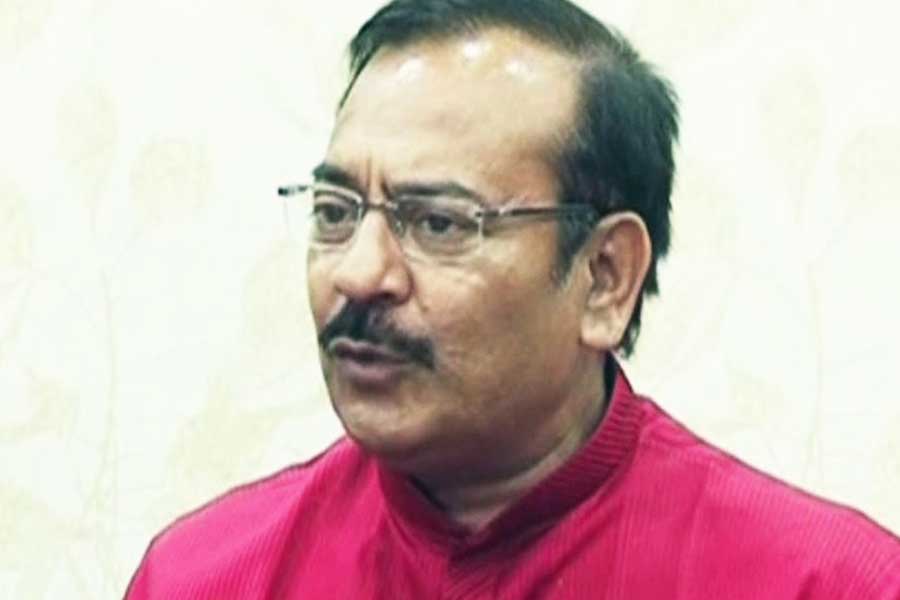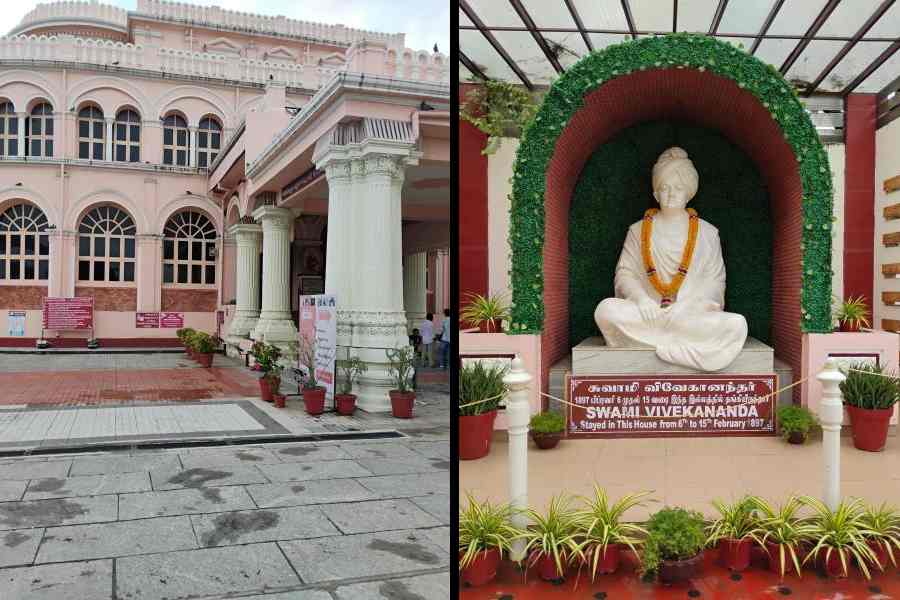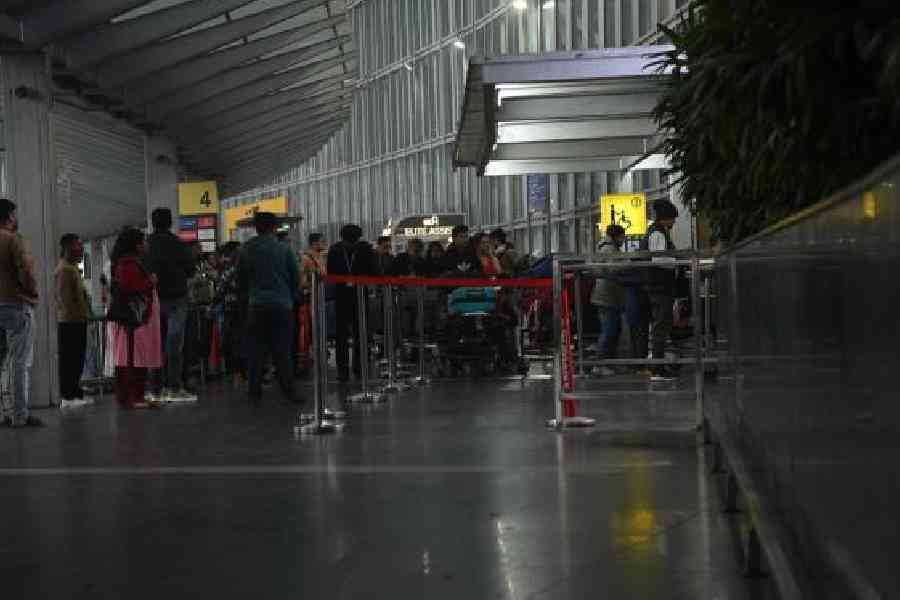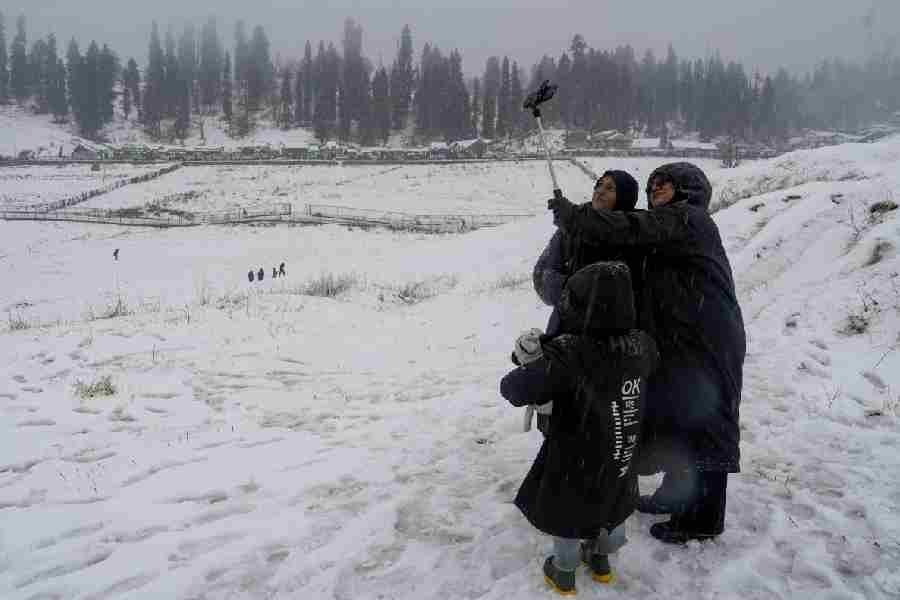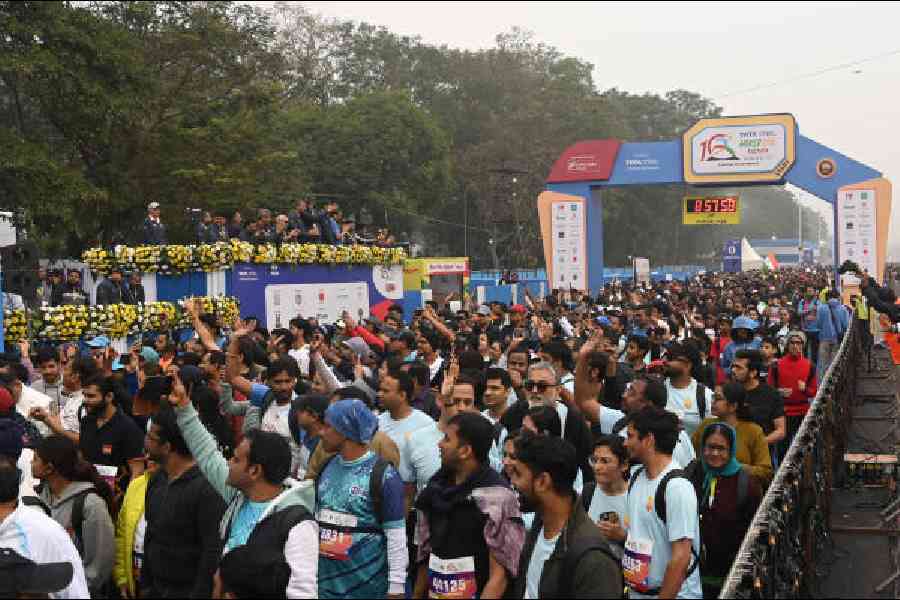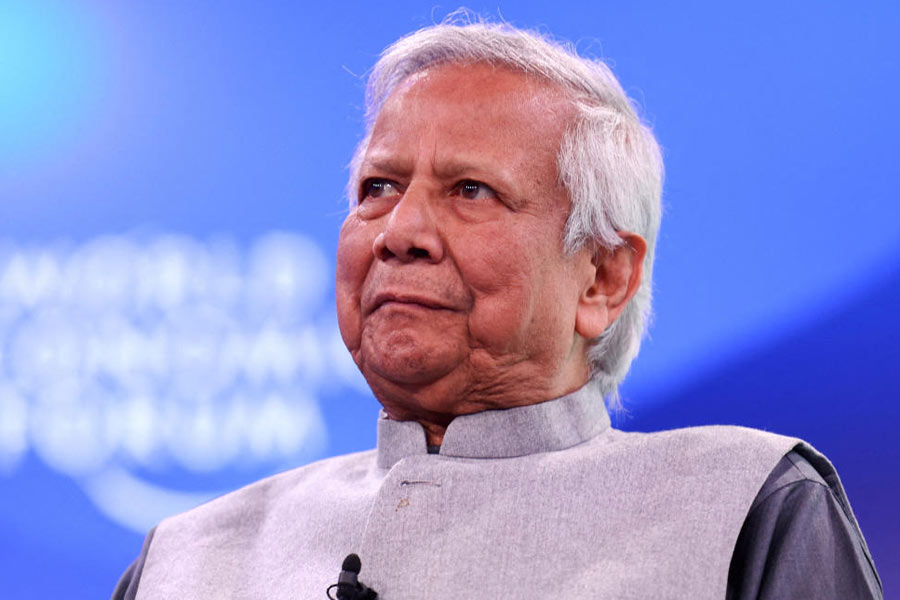 |  |
| (Left) Satyarup Siddhanta after summitting Mont Blanc; Siddhanta and his team atop the Kilimanjaro | |
Calcutta, Sept. 29: He had asthma when he was a child and grew up to become a busy techie, where else, but in Bangalore.
But Satyarup Siddhanta still managed to pack in many a summit in his 31 years — of them four peaks are the highest in the respective continents and were climbed in a span of two years.
Siddhanta isn’t done yet. The Everest beckons, plus Siddhanta’s dream is to scale the highest peaks in all seven continents.
Born in Calcutta and raised in Behrampore, Siddhanta has been in the news for standing on top of Mont Blanc, the highest peak in the Alps in Europe.
At 15,781ft, the height of Mont Blanc would not seem daunting to a mountaineer. It was navigating the ridges at –20°C that was tough, he said.
“There was no fixed rope to arrest our fall. Unlike the Everest, where all risky areas have a fixed rope to prevent accidents, Mont Blanc has no such thing. The mountain is solid ice. There was hardly any space to keep my feet together. At times, there was not even space for one foot. One wrong step and I could have vanished forever,” Siddhanta said.
He took with him a French guide and summitted in three days. “We needed to be alert about the weather forecast. We braved fierce winds and the temperature was -20°C,” he said. The day before Siddhanta set out, the wind speed was 100kmph and climbers who tried that day, failed.
Like Siddhanta, Mont Blanc, too, has been in the news of late but for the opposite reason. This summer, 14 climbers and guides fell to their death in separate accidents, which some say is because of excessive and amateurish tourist interest in scaling the peak.
Apurba Kumar Bhattacharyya, another mountaineer from Bengal who summitted Mont Blanc in 1972 and 1976, said the peak was not “the most difficult”. But a good deal of “rock-climbing and navigating of knife-edge ridges are to be expected”, 71-year-old Bhattacharyya said in Calcutta. Tourists take gondolas for a part of the way, but serious climbers who walk it encounter crevasses and glaciers that definitely demand competence in rope work and crevasse-rescue techniques, he said.
Veteran mountaineer Basanta Singha Ray, the first Indian to climb the Kanchenjungha (28,169 feet), said: “From the altitude point of view, some of the tallest peaks in the Himalayan ranges simply cannot be compared with that of any other range…. However, to keep oneself fit at such an altitude, amid such unpredictable weather, is tough.”
Siddhanta has seen greater heights, literally.
He led a team of nine to Africa’s highest peak, the Kilimanjaro (19,341ft), in June 2012. With a team of 11, Siddhanta summitted Mt Elbrus (18,510 ft), the highest in Europe, in June 2013. In January this year he conquered Mt Aconcagua (22,841ft), the highest mountain in South America. In June, he summitted the highest mountain of North America, Mt Denali in Alaska, this time unguided.
His dream is to conquer the Everest, a feat he has scheduled for 2015. But he needs money to see this seven-peak dream through.
A trip to Everest would cost him Rs 19 lakh. Of this, Rs 6 lakh has been given by the Manipal group — Siddhanta studied at the Sikkim Manipal Institute of Technology.
Till now, his expeditions were self-funded. He took loans and said he was almost “bankrupt” now. “Now I have loans of more than Rs 10 lakh that I have to repay,” he said.
Siddhanta was not the fittest of kids in school. He could hardly run 100 metres, so climbing mountains were out of the question, he said.
His interest in mountains was perhaps kindled on his first Darjeeling trip with his parents in childhood. “Perhaps it sparked the love for mountains subconsciously,” Siddhanta said.
In 2010, he trekked to Everest Base Camp and that’s when the climber bug bit him.
He did a mountaineering course from the Himalayan Mountaineering Institute in Darjeeling and that gave him hope.
Siddhanta said he did not see his adventures as “conquests”. “We can only pay tribute to a great manifestation of nature. Standing on the peak makes me humble,” he said.
How does he manage to keep his techie job, Metro asked him.
Siddhanta has worked with Brady Corporation, a private company in Bangalore, for the past six years and said the firm helped him pursue his passion by providing flexibility at work.
“But I am not sure how my company will react when I will need 60 days leave for my Everest expedition. In the worst case, I will have to resign,” he said.
Initially, his parents would be worried sick during his expeditions. But Siddhanta now texts home through a GPS-enabled satellite device.
“There is risk everywhere. You can have an accident anytime anywhere. Should that stop people from moving? Should that stop people from dreaming? You only live once. Make the best of it,” he said.


